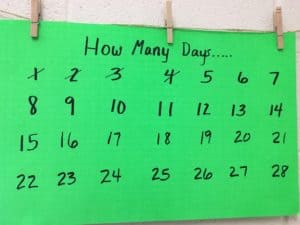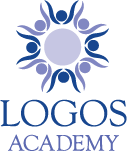Spring is a time of new life and growth. Flowers bloom, caterpillars turn into butterflies and nature is alive with sound and color. Spring is also a great time to use the life cycle to teach preschoolers math and science and increase their literacy.
Nature’s Life Cycle Teaches Kids Science, Math, Literacy and Vocabulary
All living things have a life cycle. The life cycle are the stages they go through in their lifetime. Logos kids have learned about the life cycles of frogs, butterflies and turkeys. When preschoolers learn about the life cycle, they connect to nature and learn how things change.
In addition to science, did you know that learning about animal life cycles can also improve your preschooler’s math, reading and ability to express herself?
The life cycle offers a perfect opportunity to practice and learn two math skills: counting and sequencing. Sequencing is arranging things in a particular order, which is an essential building block concept for preschoolers.
A natural complement to learning about the life cycle is reading fun stories like The Very Hungry Caterpillar. We applied the concepts of sequencing to reading by differentiating beginning, middle and end. Reading also helped our kids acquire rich vocabulary words such as chrysalis and metamorphosis.
Spotlight: Turkey Eggs
During the month of May, Logos kids had the opportunity to observe the turkey life cycle over the course of four weeks. A Logos parent brought an incubator with seven turkey eggs. The incubator stayed in a classroom so the children could observe it daily. After 28 days, the turkey chicks hatched! A few kids got to witness the tiny turkey babies literally break out of their eggs. All the children were excited to see how the turkey eggs became turkey babies.
https://www.facebook.com/immersionpreschoolinHerndon/videos/1956762124342929/?t=2
Four Lessons from the Turkey Life Cycle
How to Care for the Eggs
The children learned that it was essential to care for the eggs at this stage of the life cycle.





The incubator kept the eggs warm. But the kids helped to turn the eggs a few times per day just as the mother turkey would. They learned the importance of being gentle, making sure there was water in the incubator to keep the humidity at a certain level and what an incubator does.
The kids took the eggs out a few times during the cycle to see how the turkeys were developing. They took the eggs into a dark room and shined a flashlight under them to see what was happening inside. The kids saw a heart beating one time, then heard the chicks pecking at the egg at a later time.
Once the eggs hatched the children had an opportunity to care for the turkey babies by feeding and watering them.
Counting Backward and Forward

 Counting started by learning how many stages are in the turkey life cycle. We discussed counting how many days it would take the eggs to hatch. We did this in two ways: one was counting down the days starting with 28 days, the other was counting the number of days from 1 to 28.
Counting started by learning how many stages are in the turkey life cycle. We discussed counting how many days it would take the eggs to hatch. We did this in two ways: one was counting down the days starting with 28 days, the other was counting the number of days from 1 to 28.
Sequencing
The children discussed the life cycles of butterflies, frogs and turkeys. They learned what stage came first, second, third and so on. This helped them understand life cycles have an order and process. The sequencing lessons also allowed the class to compare similarities and differences between different life cycles.
Learn about the first six stages of the turkey life cycle in this slideshow.
[ngg_images source=”galleries” container_ids=”5″ display_type=”photocrati-nextgen_basic_imagebrowser” ajax_pagination=”0″ order_by=”sortorder” order_direction=”ASC” returns=”included” maximum_entity_count=”500″]
The last stage the children got to see was the baby turkeys starting to flap their wings and hop. See them in action!
https://www.facebook.com/immersionpreschoolinHerndon/videos/1956755257676949/
Similarities and Differences
The children were able to compare their experience with the turkey eggs to what they previously learned about frogs and butterflies. They saw that the similarity between butterflies, frogs and turkeys is that they all start as eggs. The difference? Butterflies and frogs first feed on the egg but turkey chicks do not.
The children also applied similarities and differences to the attributes of the turkey chicks. They discussed whether they all had the same number of legs (they did), if they were the same color (there was some variation) and whether some were smaller or larger than others (they were).
Want to Learn More About Life Cycles?
Learning about the natural life cycle is a wonderful thing to do during this time of the year. Here are 3 things you can do with your child at home:
- Watch videos or read books together learn about the life cycles. The Very Hungry Caterpillar is a classic book to read and is available at most libraries. You can also check out this video to see how a caterpillar becomes a butterfly. Or watch this video to learn about the frog life cycle.
- Do simple life cycle crafts and projects together. You can find multiple DIY life cycle ideas and projects here.
- Make a real life connection by planting beans and watching them grow or making a butterfly garden.

